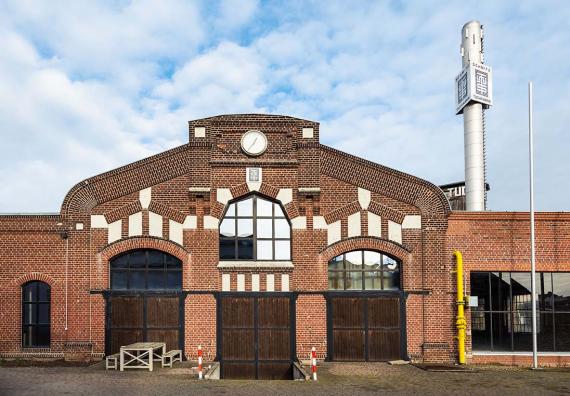Sachsenstraße 30
41063 Mönchengladbach
Germany
Otto and Hermann Aschaffenburg, founded the company "Gebrüder Aschaffenburg" in 1897 and started their production mechanical looms. Their weaving mill was initially located in rented rooms of the non-Jewish dye works "Simons & Gier" on today's Künkelerstraße 37. Simons & Gier processed the woven goods made by their tenants directly further.
In 1912, the Aschaffenbur brothers built their own factory buildings at Sachsenstrasse 30. During the First World War, the company did not shut down. Due to a shortage of raw materials, paper yarns were produced for a time. After the First World War, the company, now called "Tuchfabrik Gebrüder Aschaffenburg", rose to become the leading weaving mill in the whole of Mönchengladbach by about 1923. It was the first company in the city to provide its mechanical looms with beltless individual drive (via gear wheels). This pioneering innovation was very soon adopted by other textile companies.
At the end of the 1920s, the company ran into temporary financial difficulties. The company merged supra-locally in a rescue company to form a syndicate, which was controlled from Berlin under the name "TOGA". The merged companies retained their independence.
In 1929, the company was sold to the non-Jewish Lahusen brothers from Bremen. However, they ran into financial difficulties and the cloth factory was shut down for some time before being taken over by a limited partnership on December 31, 1937. Of this limited partnership, the Reifenberg family from Cologne and Willy Schmitz from Viersen each had limited partner shares. The cloth factory initially retained its name until it was taken over by Willy Schmitz as sole owner on June 24, 1938, who changed the company name to "Tuchfabrik Willy Schmitz in Mönchengladbach" on July 22, 1941. Until today this company exists at the same location.




Add new comment